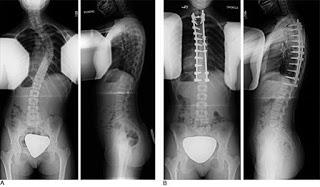Causes of AIS
The precise cause for AIS is not known and neither can the condition be associated with other basic abnormalities. The term 'idiopathic' refers to a condition, which is mysterious. In any case, the scientific network agrees that a blend of factors including
Hormonal problems
Irregular development of the bone and muscle
Hereditary predisposition
Nervous symptom abnormalities
Usually for individuals with a family ancestry of the condition to be influenced. Almost 30 percent of AIS patients have a hereditary predisposition to the condition. The two people can be influenced by the disease, yet girls are at a higher risk of creating more prominent curves on the spine after some time.
AIS Symptoms
Outrageous agony is frequently not one of the symptoms identified with adolescent idiopathic scoliosis. Here is a glance at some of the more typical symptoms associated with the condition.
Asymmetrical shoulder height- AIS and the resulting distortion of the spine frequently causes one shoulder to hang lower than the other one.

Adolescent Idiopathic Scoliosis
Tilted shoulder blades- Aside from the varying height in shoulders, one shoulder sharp edge might be tilted forward, while the other cutting edge might be positioned typically.
Rib protrusion- As the name suggests, AIS may cause one rib to jut from the back. This can be easily visible from behind the patient.
Torso Lean- This symptom is basic in individuals where the AIS influence the center or lower back. In such a case, the chest area may seem to lean any one side, and one side of the hip may seem to be higher than the other one.
AIS Treatments
Treatment is isolated into surgical and non-invasive. While first and foremost, the non-invasive strategy, such as prescription might be used, surgery might be required if every single other cure fall flat. In any case, treatment of some sort is essential as overlooking the issue can severely restrict development and may even prompt other severe issues. Some insignificantly invasive procedures have also been created, which can help treat the condition.
